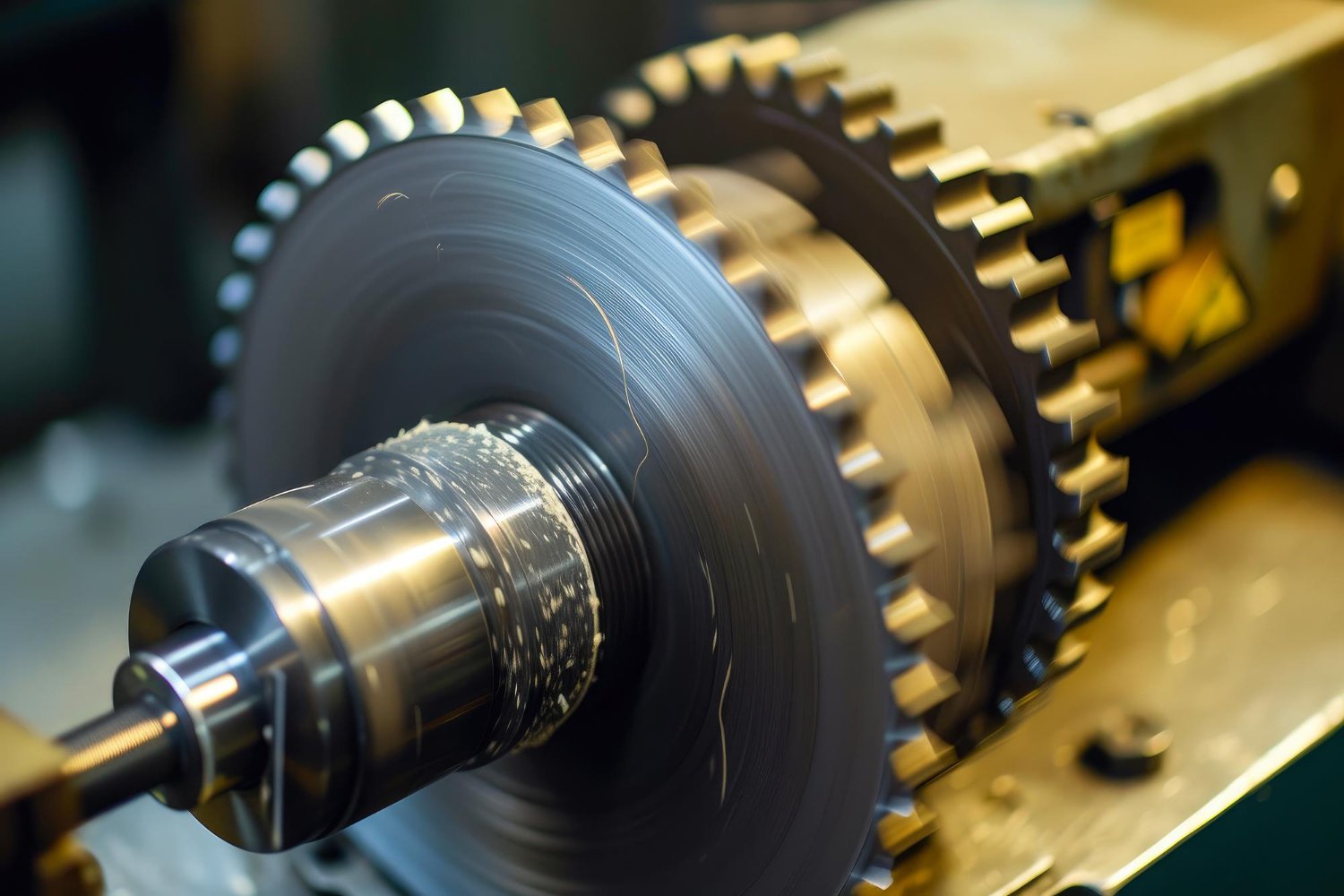
PROCESS
While discussing engineering and manufacturing, we cannot ignore the role of large gear grinding wheels playing a pivotal role in the production of high-precision gears. These essential tools ensure that gears meet stringent quality standards, enhancing performance and durability in a variety of applications.
This article focuses on the precision, efficiency, durability, and innovations surrounding large gear grinding wheels, providing insights into how these tools optimize grinding processes for engineers and manufacturers.
The Importance of Precision in Gear Grinding
Precision in gear grinding is crucial for several reasons, as mentioned below:
Operational Efficiency: Precise gears reduce friction and wear, leading to smoother operation and longer lifespan of machinery.
Load Distribution: Accurate grinding ensures even load distribution across gear teeth, enhancing the gear’s ability to handle stress.
Noise Reduction: High-precision gears operate more quietly, which is essential in industries where noise reduction is critical.
Attaining such precision requires advanced grinding wheels designed specifically for large gears. These wheels must maintain tight tolerances and produce consistent results across large batches of gears.
Efficiency: Enhancing Production Through Innovation
Efficiency in gear grinding translates to lower production costs, reduced downtime, and higher thrughput. Innovations in grinding wheel technology have significantly contributed to these improvements. Some of the key advancements include:
Advanced Abrasive Materials: The development of new abrasive materials, such as cubic boron nitride (CBN) and diamond, has revolutionized gear grinding. These materials offer superior hardness and wear resistance, resulting in longer-lasting grinding wheels that maintain their cutting ability over time.
Optimized Wheel Design: Modern grinding wheels are designed with optimized structures that improve cutting efficiency. This includes the use of engineered pores and advanced bonding techniques that enhance coolant flow and chip evacuation, reducing thermal damage to gears.
Automation and Control Systems: Integration of computer numerical control (CNC) systems with gear grinding machines allows for precise control of grinding parameters. This automation not only improves consistency and precision but also reduces the need for skilled labour, lowering operational costs.
Durability: Long-Lasting Solutions for Demanding Applications Durability is a key consideration for large gear grinding wheels, especially in industries where equipment downtime can be costly. Durable grinding wheels contribute to:
Reduced Tool Changeover: Longer-lasting wheels mean fewer interruptions for tool changes, keeping production lines running smoothly.
Consistent Quality: Durable wheels maintain their shape and cutting performance over time, ensuring consistent gear quality.
Cost Savings: While durable wheels might have a higher upfront cost, their longevity results in lower overall expenses due to reduced replacement frequency and maintenance needs.
Manufacturers accomplish durability through the use of high-quality materials and advanced manufacturing processes. For example, the use of high-performance bonds and reinforcement techniques helps extend the life of grinding wheels, even under high-stress conditions.
Innovations Driving Optimization
The quest for optimization in gear grinding has led to several innovative solutions that enhance both precision and efficiency. Here are some of the cutting-edge developments:
Smart Grinding Wheels: Incorporating sensors and IoT technology into grinding wheels enables real-time monitoring of the grinding process. These smart wheels can detect issues such as wheel wear, imbalance, and thermal changes, allowing for immediate adjustments to maintain optimal performance.
Adaptive Grinding Technologies: Advanced adaptive control systems can adjust grinding parameters on the fly based on feedback from the grinding process. This ensures that the grinding wheel operates at peak efficiency, regardless of variations in the material or gear geometry.
High-Speed Grinding: The development of high-speed grinding technologies has significantly reduced cycle times for large gear production. By operating at higher speeds, these systems can remove material more quickly while maintaining precision, leading to substantial productivity gains.
Environmentally Friendly Solutions: Innovations aimed at reducing the environmental impact of grinding processes are gaining traction. This includes the development of grinding wheels that require less coolant and generate less waste, as well as the use of recyclable materials in wheel construction.
Case Study: Optimizing Gear Grinding in Automotive Manufacturing
To illustrate the impact of these advancements, consider a case study from the automotive industry, where precision and efficiency are paramount. A leading car manufacturer sought to improve the production of transmission gears to meet increasing demand while maintaining stringent quality standards.
Challenges:
High Production Volume: The need to produce thousands of gears per day.
Stringent Quality Requirements: Gears must meet tight tolerances and surface finish specifications.
Cost Constraints: The need to minimize production costs while maintaining high quality.
Solutions:
Advanced Abrasive Materials: The manufacturer switched to grinding wheels made from cubic boron nitride (CBN), which offered superior wear resistance and maintained cutting performance over longer periods.
Optimized Wheel Design: Implementing grinding wheels with engineered pores improved coolant flow, reducing thermal damage and extending wheel life.
Automation and Control: Integrating CNC systems allowed for precise control of grinding parameters, reducing variability and increasing consistency across large batches.
High-Speed Grinding: Adopting high-speed grinding technologies reduced cycle times, allowing for increased production volume without compromising quality.
Results:
Increased Throughput: The manufacturer was able to increase gear production by 25% without additional labour costs.
Enhanced Gear Quality: Consistent precision and surface finish were achieved, meeting the stringent quality requirements.
Cost Savings: Despite the higher initial cost of advanced grinding wheels, the manufacturer realized significant cost savings through reduced tool changeover and maintenance expenses.
Large gear grinding wheels are at the forefront of innovation in the manufacturing industry, offering unparalleled precision and efficiency. Advancements in abrasive materials, wheel design, automation, and adaptive technologies are driving significant improvements in gear-grinding processes. For engineers and manufacturers, investing in these innovative solutions translates to enhanced performance, reduced costs, and a competitive edge in the market.
With the increasing demand for high-quality gears continuing to rise across various industries, the role of large gear grinding wheels in optimizing production processes will become increasingly vital. By staying abreast of the latest innovations and adopting durable, efficient grinding solutions, manufacturers can ensure they meet the ever-evolving needs of their customers while maintaining a strong focus on precision and quality.